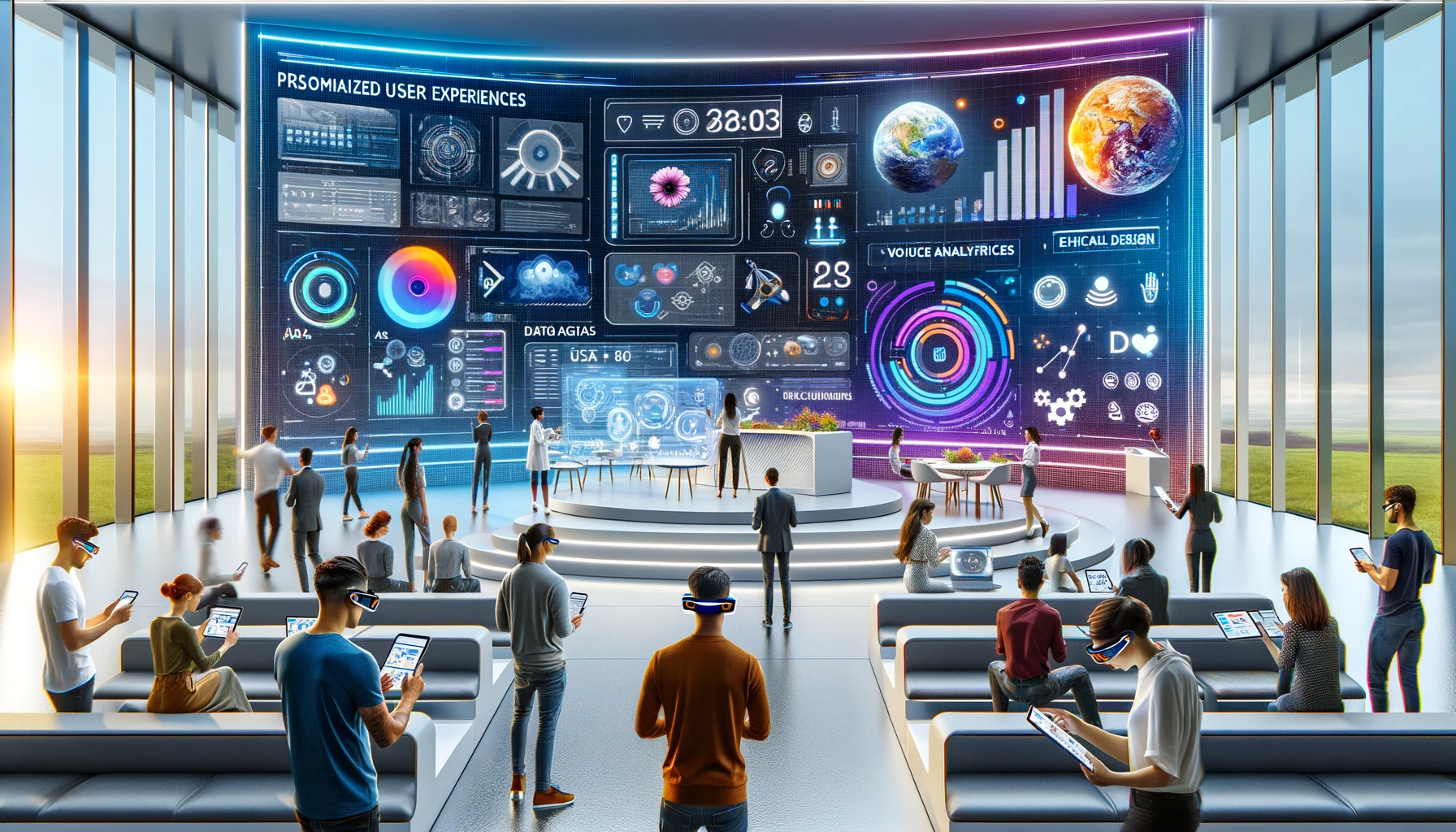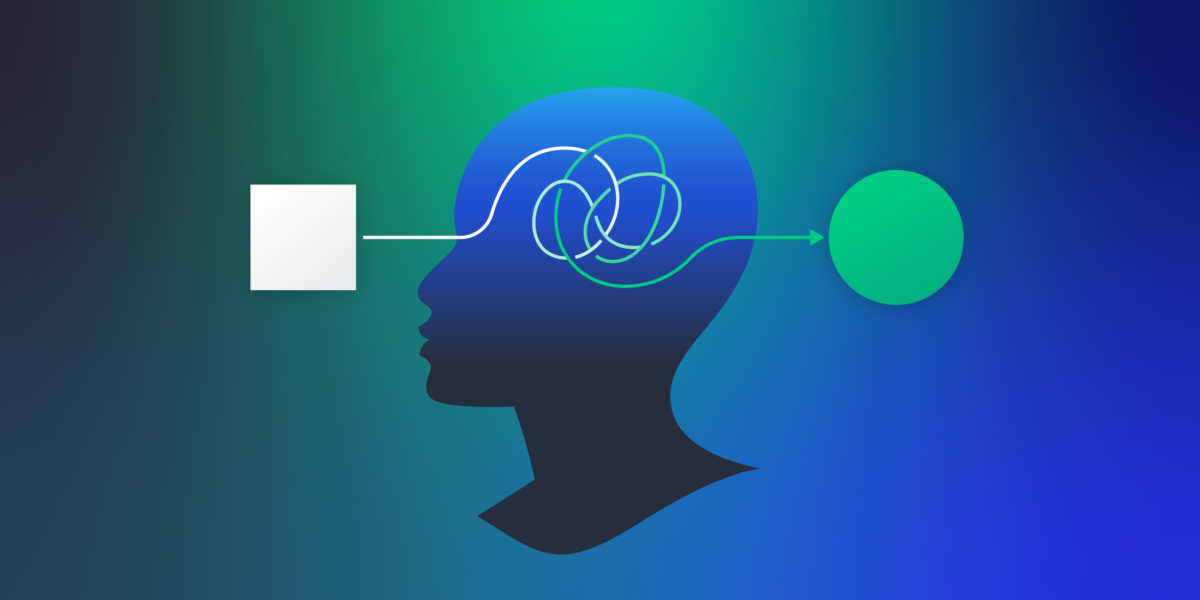As a designer, it’s necessary to stay ahead in user experience (UX) design. Day by day, technology is advancing, making it essential for designers to stay informed. Let’s explore some key trends and innovations that are shaping the future of UX design.
What is user experience (UX) design?
User Experience (UX) design is a multidisciplinary field focused on creating products, services, and systems that are meaningful, relevant, and enjoyable for users. It involves understanding the needs, behaviors, and motivations of users to design interfaces and interactions that meet their goals and expectations. Designers in this field aim to create seamless and intuitive experiences that increase user satisfaction and loyalty.
Main Key aspects of UX design include:
- User Research: Understanding the needs, behaviors, and preferences of users through methods such as interviews, surveys, and observation.
- Information Architecture: Organizing and structuring content in a way that is logical and easy for users to navigate.
- Interaction Design: Designing interactive elements and interfaces that facilitate user interactions and achieve user goals.
- Visual Design: Creating visually appealing and consistent interfaces that align with the brand’s identity and values.
- Usability Testing: Evaluating the usability of a product or interface through testing with real users to identify areas for improvement.
Why is it necessary for designers to stay updated with UX trends and innovations?
Designers need to stay updated with UX trends and innovations to remain relevant and competitive in their field. Here are some key reasons why it’s necessary:
- User expectations evolve rapidly, driven by technological advancements and changing design trends. Staying updated helps designers meet these expectations and deliver experiences that users find intuitive and engaging.
- Keeping abreast of UX trends gives designers a competitive edge. They can leverage new techniques and technologies to create innovative solutions that set them apart from their competitors.
- Following UX trends allows designers to incorporate best practices into their work, leading to improved user experiences. This includes considerations such as usability, accessibility, and user satisfaction.
- Adopting new tools and methodologies can streamline the design process, making it more efficient and productive. Designers who stay updated can work more effectively, saving time and resources.
- staying updated is essential for career growth. Employers value designers who demonstrate a commitment to learning and innovation, which can lead to better job opportunities and career advancement.
1. Personalized User Experiences
Personalized user experiences (UX) are increasingly driven by AI and machine learning, revolutionizing how products and services interact with users. These technologies enable predictive analytics, which can anticipate user needs and tailor experiences accordingly.
AI and machine learning algorithms analyze user data, such as browsing behavior, purchase history, and demographic information, to create detailed user profiles. These profiles are then used to personalize the user experience by offering relevant content, product recommendations, and tailored interactions.
Predictive analytics can anticipate user needs by analyzing patterns in user behavior. For example, an e-commerce website can predict which products a user is likely to buy based on their browsing and purchase history. This allows the website to offer personalized product recommendations, improving the user experience and increasing the likelihood of a purchase.
2. Augmented and Virtual Reality (AR/VR)
Augmented and Virtual Reality (AR/VR) technologies are transforming user experiences by offering immersive and interactive environments. These technologies are integrated into UX design to create engaging experiences in various industries:
- Gaming: AR/VR enhances gaming experiences by creating immersive worlds and interactive gameplay. For example, Pokémon GO uses AR to place virtual creatures in the real world, encouraging players to explore their surroundings.
- Education: AR/VR revolutionizes education by providing immersive learning experiences. Students can explore historical sites, dissect virtual organisms, or participate in virtual field trips, making learning more engaging and interactive.
- Retail: AR enhances the shopping experience by allowing customers to try on clothes virtually or visualize furniture in their homes before making a purchase. This reduces the likelihood of returns and enhances customer satisfaction.
3. Voice User Interfaces (VUI)
Voice User Interfaces (VUIs) are playing an increasingly important role in UX design, enabled by advancements in voice recognition technology. Here’s an exploration of their growing role and the challenges and opportunities they present:
What is the Growing Role of VUIs?
VUIs are becoming more prevalent in various devices and applications, from smart speakers like Amazon Echo and Google Home to virtual assistants like Siri and Google Assistant. They allow users to interact with technology using natural language, making interactions more intuitive and efficient.
Challenges in Designing for VUIs:
- Ambiguity: Voice commands can sometimes be ambiguous or misunderstood, leading to errors in user interactions.
- Context: VUIs need to understand and maintain context during a conversation to provide relevant responses, which can be challenging.
- Feedback: Without visual cues, providing feedback to users about their actions or the system’s status can be challenging.
- Complex Interactions: Designing complex interactions, such as multi-step tasks or error handling, can be more challenging in a voice-only interface.
Opportunities in Designing for VUIs:
- Natural Interaction: VUIs offer a more natural way for users to interact with technology, reducing the learning curve and making interactions more accessible to a wider range of users.
- Hands-free Operation: VUIs enable hands-free operation, allowing users to interact with devices and applications while performing other tasks.
- Accessibility: VUIs can improve accessibility for users with disabilities, such as visual impairments, by providing an alternative way to interact with technology.
4. Minimalistic and Functional Design
Minimalistic design is a trend in UX design that focuses on simplicity and clarity, aiming to improve usability and aesthetics. Here’s a discussion on this trend and how functional design principles can enhance user engagement:
Minimalistic Design for Improved Usability and Aesthetics:
- Minimalistic design focuses on stripping away unnecessary elements, leaving only the essential elements that contribute to the user experience. This simplicity can make interfaces easier to understand and use.
- By reducing visual clutter, minimalistic design can help users focus on the content or task at hand, improving clarity and comprehension.
- Minimalistic design often results in clean and elegant interfaces that are visually appealing and can create a sense of sophistication and modernity.
Functional Design Principles Enhancing User Engagement:
- Clear Hierarchy: Functional design principles emphasize creating a clear hierarchy of information, making it easier for users to navigate and understand content.
- Consistency: Consistent design elements, such as colors, fonts, and layouts, create a sense of familiarity and help users predict how different parts of the interface will behave.
- User-Centered Design: Functional design puts the user at the center of the design process, ensuring that the interface meets their needs and preferences.
- Feedback and Responsiveness: Functional design principles include providing feedback to users when they interact with the interface, such as through animations or changes in appearance, to confirm that their actions have been recognized.
5. Ethical and Inclusive Design
Ethical considerations in UX design, such as data privacy and accessibility, are increasingly important in creating positive user experiences. Designers must prioritize the protection of user data, ensuring that it is collected, stored, and used ethically and transparently. This involves implementing privacy settings, obtaining explicit consent for data collection, and regularly auditing data practices to ensure compliance with regulations and best practices.
Inclusive design is another crucial aspect of UX that focuses on creating products and services that can be accessed and used by people of all abilities. This involves considering diverse user needs, including those with disabilities, and designing interfaces that are flexible and adaptable. Strategies for inclusive design include providing alternative formats for content (such as text descriptions for images), ensuring compatibility with assistive technologies (like screen readers), and conducting user testing with diverse groups to identify and address accessibility barriers.
6. Cross-Platform and Multi-Device Experiences
Users expect seamless experiences across different devices and platforms. Whether they are accessing a website on a desktop computer, a smartphone, or a tablet, users want the experience to be consistent and intuitive. This need for consistency has led to the rise of cross-platform and multi-device experiences in UX design.
One key strategy for designing cross-platform and multi-device experiences is responsive design. Responsive design involves creating interfaces that can adapt to various screen sizes and resolutions, ensuring that the content remains readable and usable across different devices. This often involves using fluid grids, flexible images, and media queries to adjust the layout and styling of the interface based on the device’s screen size.
Another important aspect of designing for multiple devices is considering the different input methods available. For example, on a touchscreen device, users interact with the interface using gestures and taps, while on a desktop computer, they may use a mouse and keyboard. Designing interfaces that are optimized for these different input methods can improve the overall user experience and make interactions more natural and intuitive.
7. Data-Driven Design Decisions
Data-driven design decisions are at the forefront of UX design, playing a crucial role in informing design choices and enhancing user experiences. By leveraging data analytics, designers can gain valuable insights into user behavior, preferences, and pain points, allowing them to make informed decisions that improve the overall usability and effectiveness of a product or service.
One key benefit of data-driven design is the ability to identify patterns and trends in user behavior. By analyzing data such as user interactions, click-through rates, and conversion rates, designers can gain a deeper understanding of how users engage with a product and identify areas for improvement. This data-driven approach can lead to more effective design solutions that are tailored to the needs and preferences of the target audience.
However, while data analytics can provide valuable insights, it is important for designers to balance these insights with user feedback and intuition. User feedback, gathered through methods such as surveys, interviews, and usability testing, can provide valuable qualitative insights into user needs and preferences that may not be captured by data alone. Similarly, designers’ intuition and expertise play a crucial role in interpreting data and making design decisions that align with the overall vision and goals of a project.
One challenge of balancing data-driven insights with user feedback and intuition is the potential for conflicting information. For example, data may suggest that a certain feature is popular among users, but qualitative feedback may indicate that it is confusing or frustrating to use. In such cases, designers must carefully weigh the evidence and make decisions that prioritize the user experience while also considering the data-driven insights.
Conclusion:
In conclusion, staying ahead in UX design means embracing personalization, AR/VR, VUIs, minimalistic design, ethics, inclusivity, and responsive design. Adapting to these trends ensures user-centric experiences that meet evolving user needs and preferences.
![]() Give feedback about this article
Give feedback about this article
Were sorry to hear about that, give us a chance to improve.






